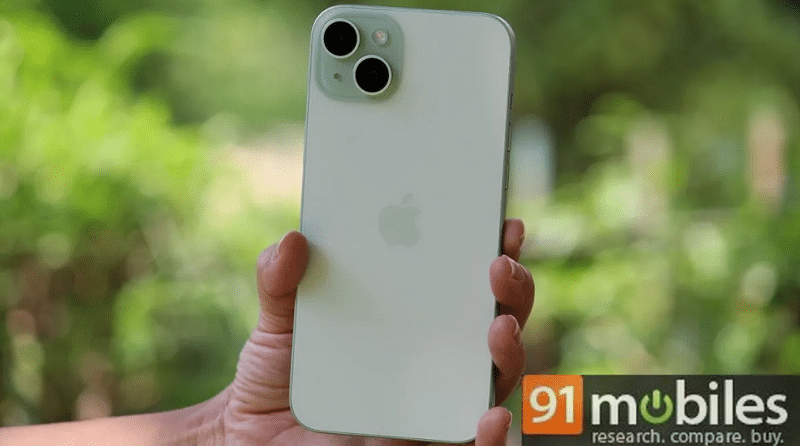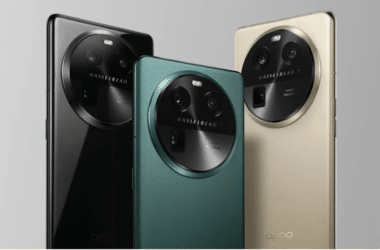iPhone 16 Series: What to Expect from Apple’s Upcoming A18 Chipset
In the fast-paced world of smartphones, Apple continues to innovate and astound its loyal users with every new release. With the iPhone 15 series now in the market, all eyes are on the highly anticipated iPhone 16 series. The buzz around this next-gen iPhone revolves around its core component, the A18 chipset. Renowned Apple analyst Jeff Pu has provided some intriguing insights into what we can expect from the A18 chipset and its potential implications for the iPhone 16 series. Let’s dive into the details.
| Key Specs | Specifications |
|---|---|
| RAM | 6 GB |
| Processor | Apple A16 Bionic |
| Rear Camera | 13 MP + 13 MP |
| Front Camera | 13 MP |
| Battery | 4500 mAh |
| Display | 6.1 inches (15.49 cm) OLED |
| Launch Date | October 23, 2023 (Unofficial) |
| Operating System | iOS v16 |
| Performance | Specifications |
|---|---|
| Chipset | Apple A16 Bionic |
| CPU | Hexa Core (3.46 GHz, Dual core, Everest + 2.02 GHz, Quad core, Sawtooth) |
| Architecture | 64 bit |
| Fabrication | 4 nm |
| Graphics | Apple GPU (Five-core graphics) |
| RAM | 6 GB |
| Display | Specifications |
|---|---|
| Display Type | OLED |
| Screen Size | 6.1 inches (15.49 cm) |
| Resolution | 1179 x 2556 pixels |
| Pixel Density | 461 ppi |
| Bezel-less display | Yes |
| Touch Screen | Yes, Capacitive Touchscreen, Multi-touch |
| Camera | Specifications |
|---|---|
| Main Camera Setup | Dual |
| Main Camera Resolution | 13 MP, 13 MP |
| Autofocus | Yes |
| Flash | Yes, LED Flash |
| Main Camera Image Resolution | 4128 x 3096 Pixels |
| Main Camera Features | Digital Zoom, Auto Flash, Face detection, Touch to focus |
| Main Camera Video Recording | 1920×1080 @ 30 fps |
| Front Camera Setup | Single |
| Front Camera Resolution | 13 MP |
| Front Camera Video Recording | 1920×1080 @ 30 fps |
| Battery | Specifications |
|---|---|
| Capacity | 4500 mAh |
| Type | Li-Polymer |
| Removable | No |
| Quick Charging | Yes, Fast |
| USB Type-C | No |
| Storage | Specifications |
|---|---|
| Internal Memory | 128 GB |
| Expandable Memory | No |
| Network & Connectivity | Specifications |
|---|---|
| SIM Slot(s) | Dual SIM, GSM+GSM |
| SIM Size | SIM1: Nano, SIM2: eSIM |
| Network Support | 5G Not Supported in India, 4G Supported in India, 3G, 2G |
| VoLTE | Yes |
| SIM 1 | 4G Bands: TD-LTE 2300(band 40), FD-LTE 1800(band 3), 3G Bands: UMTS 1900 / 2100 / 850 / 900 MHz, 2G Bands: GSM 1800 / 1900 / 850 / 900 MHz, GPRS: Available, EDGE: Available |
| SIM 2 | 4G Bands: TD-LTE 2300(band 40), FD-LTE 1800(band 3), 3G Bands: UMTS 1900 / 2100 / 850 / 900 MHz, 2G Bands: GSM 1800 / 1900 / 850 / 900 MHz, GPRS: Available, EDGE: Available |
| Wi-Fi | Yes, Wi-Fi 4 (802.11 b/g/n) |
| Wi-Fi Features | Mobile Hotspot |
| Bluetooth | Yes, v5.3 |
| GPS | Yes with A-GPS, Glonass |
| USB Connectivity | Mass storage device, USB charging |
| Multimedia | Specifications |
|---|---|
| Loudspeaker | Yes |
| Audio Jack | Lightning |
| Sensors | Specifications |
|---|---|
| Fingerprint Sensor | No |
| Other Sensors | Light sensor, Proximity sensor, Accelerometer, Barometer, Compass, Gyroscope |
What’s the Fuss About the A18 Chipset?
Apple has been consistently pushing the boundaries when it comes to smartphone performance, and the A-series chipsets have been a key factor in this endeavor. The A18 chipset, as reported, is expected to take this tradition a step further. It’s worth noting that the A16 Bionic powers the baseline iPhone 15 and iPhone 15 Plus, while the Pro models enjoy the newer A17 Pro SoC. However, if the reports are accurate, the A18 chipset could be the new standard for all models of the next iPhone series.
Insights from Jeff Pu
Jeff Pu, a prominent figure in the realm of Apple analysis and leaks, recently reiterated his prediction regarding the A18 chipset. In his research note with Hong Kong-based investment firm Haitong International Securities, he stated, “We expect all iPhone 16 models to feature A18.” This is a significant endorsement of the notion that Apple is going all-in with the A18 chipset for its upcoming phones.
A Technological Leap: N3E Process
What sets the A18 chipset apart is its manufacturing process. According to Pu, the chips will be crafted using TSMC’s second-generation 3nm process, known as “N3E.” This process represents a leap in technology from the previous generation, the “N3B” process used for the A17 Pro chip in the iPhone 15 Pro models. This shift can be seen as a “transition design” in the world of chipset technology, promising better performance and efficiency.
Model-Specific Expectations
Pu’s research note also outlines his expectations for the specific iPhone 16 models:
iPhone 16:
Chip: A18
Process: N3E
iPhone 16 Plus:
Chip: A18
Process: N3E
iPhone 16 Pro:
Chip: A18 Pro
Process: N3E
iPhone 16 Pro Max:
Chip: A18 Pro
Process: N3E
A18 vs. A17: What’s the Difference?
The shift from the A17 Pro to the A18 chipset is a significant one. The N3E process used for the A18 is believed to be less expensive and to have improved yield compared to the N3B process. This translates to more cost-effective production and potentially better availability for the iPhone 16 series. For users, it means the promise of enhanced performance and capabilities compared to the A17.
Naming Speculations
As with any Apple release, there’s always room for speculation. While Jeff Pu’s insights provide compelling information, it’s essential to remember that the iPhone 16 series launch is still 11 months away. It’s possible that Apple may choose to label the chips differently. There’s a chance that the standard iPhone 16 models might use the A17 moniker, while the Pro models could sport the A18 Pro branding.
Pu’s Track Record
It’s worth noting that Jeff Pu has been on point with several of his Apple-related predictions. He was the first to report the shift away from solid-state buttons on the iPhone 15 Pro models and accurately predicted the increase in RAM for the Pro models, as well as the higher starting price for the Pro Max in the iPhone 14 series. His track record in predicting Apple’s moves adds weight to his latest revelations about the A18 chipset.
In conclusion, the iPhone 16 series is poised to be a game-changer in the world of smartphones, thanks to the potential adoption of the A18 chipset and the innovative N3E manufacturing process. As we eagerly await the official announcement from Apple, it’s clear that the future of iPhones is set to be faster, more efficient, and even more impressive.
FAQs
- When will the iPhone 16 series be released?
The iPhone 16 series is expected to be released in approximately 11 months. - What is the key feature of the A18 chipset?
The A18 chipset is expected to be manufactured using the second-generation 3nm process, “N3E,” which promises improved performance and efficiency. - Are there any pricing changes expected with the iPhone 16 series?
Pricing details are yet to be confirmed, but it’s speculated that the Pro models may have a higher starting price. - Will the A18 chipset be available in all iPhone 16 models?
Yes, it’s expected that all iPhone 16 models, including the standard and Pro versions, will feature the A18 chipset. - How accurate are Jeff Pu’s predictions?
Jeff Pu has a strong track record of accurately predicting Apple’s moves and product details, making his insights highly credible.












